Bats are unique mammals distinguished by their ability to fly, a feat unmatched by any other mammal. Throughout history, these creatures have been entwined with myths and superstitions. Many people believe bats are blind and bloodsuckers, but in reality, these flying mammals offer several benefits to humans. They help control pests, their droppings serve as a fertilizer, and they contribute to flower pollination and seed dispersal. Despite being intelligent creatures, only three out of nearly 1,400 species feed on blood, usually from livestock. Most bats are nocturnal and are found worldwide except in extremely cold regions, often inhabiting caves and abandoned structures.
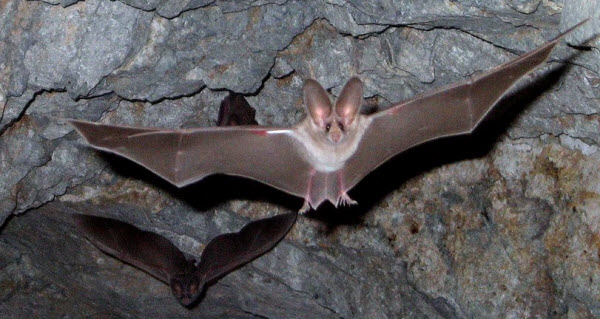
Bats hold diverse cultural significance. In some societies, they are viewed positively for their role in disease prevention and pest control. In contrast, in many Western cultures, bats are seen negatively due to their associations with darkness, magic, disease, and death. Scientific research has highlighted that bats can be natural reservoirs for various pathogens, potentially spreading diseases to humans due to their active movement and interactions with humans.
Bats are categorized into two primary groups:
- Megabats (or Fruit Bats): These bats are medium to large in size and primarily feed on fruit, pollen, or nectar. Some may eat small wild animals, while others consume fish. They are known for their large eyes and excellent vision.
- Microbats: These are smaller in size and mainly feed on insects. They use echolocation to navigate and detect flying insects. Among these, the tiny Kitti’s hog-nosed bat, less than a coin in size, lives in western Thailand and southeastern Burma and is considered the smallest mammal on Earth.
Bats are the only mammals capable of sustained flight. Their wings contain the same bones as the human hand, with a membrane of thin, strong skin stretching between the fingers. These bones are connected to their back and legs, functioning like a parachute. Bat wings are covered with tiny, sensitive projections with fine hairs called “Merkel cells,” crucial for gathering information about airflow to improve flight efficiency. Their wings are also rich in blood vessels, aiding in quick healing from injuries. Bats typically take off by dropping from a hanging position, as many cannot launch from the ground. For landing, they slow their flight until they come to a stop and grasp a branch or other surface.
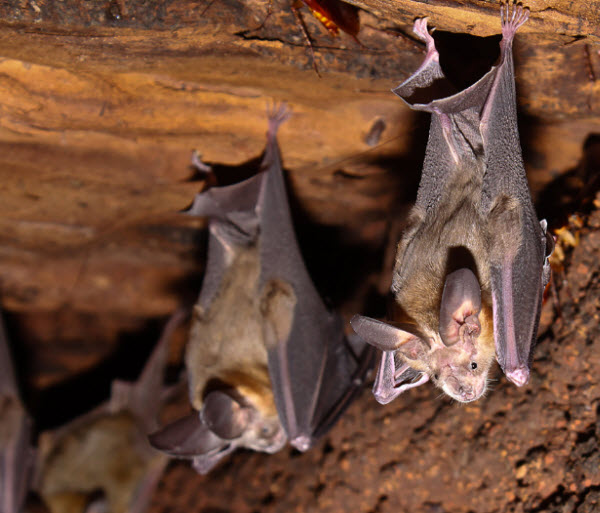
Bats are found almost everywhere except polar regions and extreme deserts. They often rest in large social groups in caves, trees, or man-made structures like bridges. Some species seek refuge in burrows, termite nests, flowers, or giant spider webs. Certain bats migrate to warmer climates during winter, with one species traveling up to 3,900 kilometers annually. How bats navigate these long distances to find the same cave each year remains a mystery. Bats can hang upside down due to the lightweight structure of their hind legs, which cannot support their body weight. They rest or sleep by hanging from their feet, wrapping their wings around their bodies like a cloak. They are nocturnal, emerging at night to forage for food.
Microbats use echolocation to find insect meals, emitting short bursts of high-pitched sounds that bounce off objects and return as echoes, helping them navigate and detect prey. Most bats delay issuing a second signal until the first echo returns. Catching prey can cause temporary blindness, as bats cannot emit echolocation signals with a mouth full of food. To counter this, some bats emit clicks through their noses as a temporary substitute. They have large ears, often five times the size of their heads or more, aiding in clearer reception of echoes, allowing them to distinguish between sounds from trees or prey. Bats are not blind; they typically have excellent night vision and see in black, white, and shades of gray.
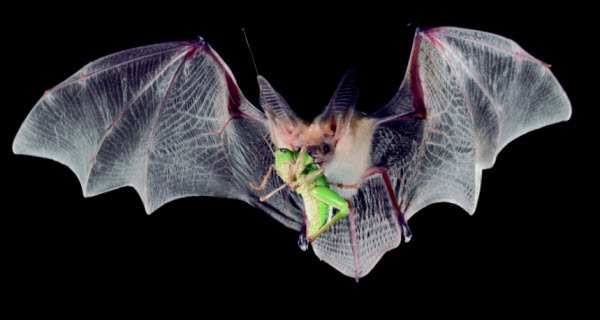
All bats nurse on milk from birth until about six months old. After reaching maturity, around 70% of bat species feed on insects like flies, mosquitoes, beetles, and cockroaches. Nectar-feeding bats, resembling hummingbirds, have long noses and tongues to sip nectar while flying. Their fur collects pollen, transferring it between flowers. Some plants rely on bats for pollination, while others eat fruit, consuming the juice and spitting out the pulp and seeds, aiding in rainforest regeneration. These seed-dispersing bats are known as “rainforest farmers.” A few species consume fish, lizards, frogs, birds, and rodents, and one type even preys on other bats, though this is relatively rare. Vampire bats, limited to three species, feed on the blood of mammals, primarily domestic cattle or birds. They make a small V-shaped incision in the animal’s skin and lap up the blood, which is more irritating than dangerous. These bats secrete a chemical in their saliva that prevents blood clotting, potentially offering medical benefits for human blood clotting disorders, with ongoing studies exploring its applications.
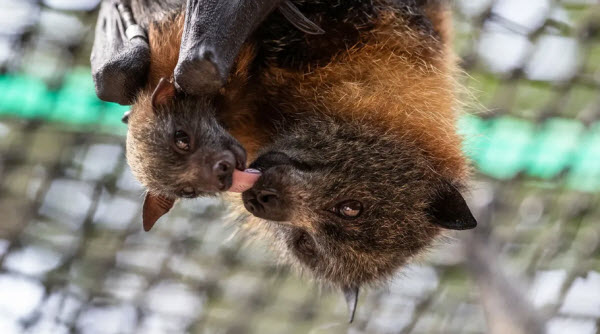
During mating season, male bats may sing, display their wings, or expand the long hairs on their heads, depending on the species. Many establish territories using scent glands on their necks and chins, with dominant bats occupying higher positions. Female bats give birth while hanging upside down, clutching their young with their wings as they fall. Most bat species have a single pup per year, known as a “pup,” although some species can have twins or triplets. Tropical bats may give birth twice a year, with pregnant females forming maternity colonies in warmer areas. Mothers identify their pups by scent and sound among thousands in the colony. Pups are born hairless and blind, nursed for two to six months, and then taught to fly and find food. In smaller bat groups, fathers may assist in rearing the young, which learn to fly within three to six weeks, depending on the species.
Bats play a crucial role in our ecosystems by pollinating trees, flowers, and cacti, and dispersing seeds to promote plant growth in new areas. They pollinate fruits like avocados, bananas, dates, figs, mangoes, and peaches. Living in colonies of thousands, each bat can consume half its body weight in insects each night, making them excellent for pest control and disease prevention. Microbes in bat droppings may have significant medical uses for humans. Despite these benefits, many bat species face severe threats from hunting and habitat destruction. In North America, bats are among the most endangered wild mammals, losing their habitats across the eastern United States and Canada due to human activities. They are also vulnerable to a fungal disease known as white-nose syndrome, which leads to starvation. The endangered Rodrigues fruit bat, found only on Rodrigues Island, east of Madagascar, is also in dire need of help. Most live in a single colony that has been used for over 50 years. When locals cut down tamarind and mango trees for other crops, the bat’s food supply dwindled, worsening after a 2003 hurricane destroyed their habitat and swept many bats out to sea.
Identification Card
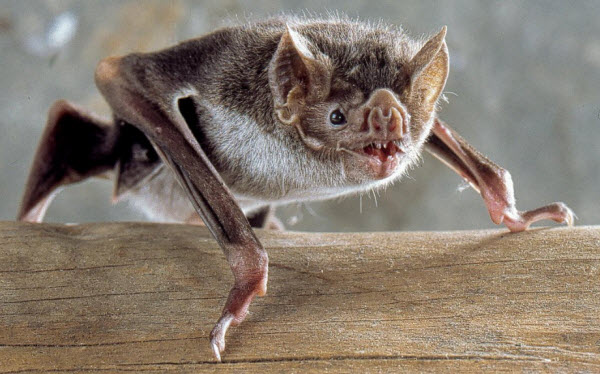
- Class: Mammals
- Family: Chiroptera
- Species: Over 1,400 species
- Lifespan: 5 to 30 years, depending on the species
- Gestation Period: Varies by species and food availability, ranging from 40 days to 10 months. Typically one pup per birth, with some species having two or three.
- Birth Weight: Varies by species, from 0.22 to 370 grams
- Size: Largest is the flying fox with a wingspan up to 1.8 meters; smallest is Kitti’s hog-nosed bat, less than 15.2 cm.
- Weight: Heaviest is the flying fox at 1.5 kg; lightest is Kitti’s hog-nosed bat at 2 g.
Quick Facts About Bats
- Vampire bats may adopt orphaned young.
- Some seeds only germinate after passing through a bat’s digestive system.
- Bat finger bones are extremely flexible, as cartilage near the tips lacks calcium and other minerals, allowing them to bend without breaking.
